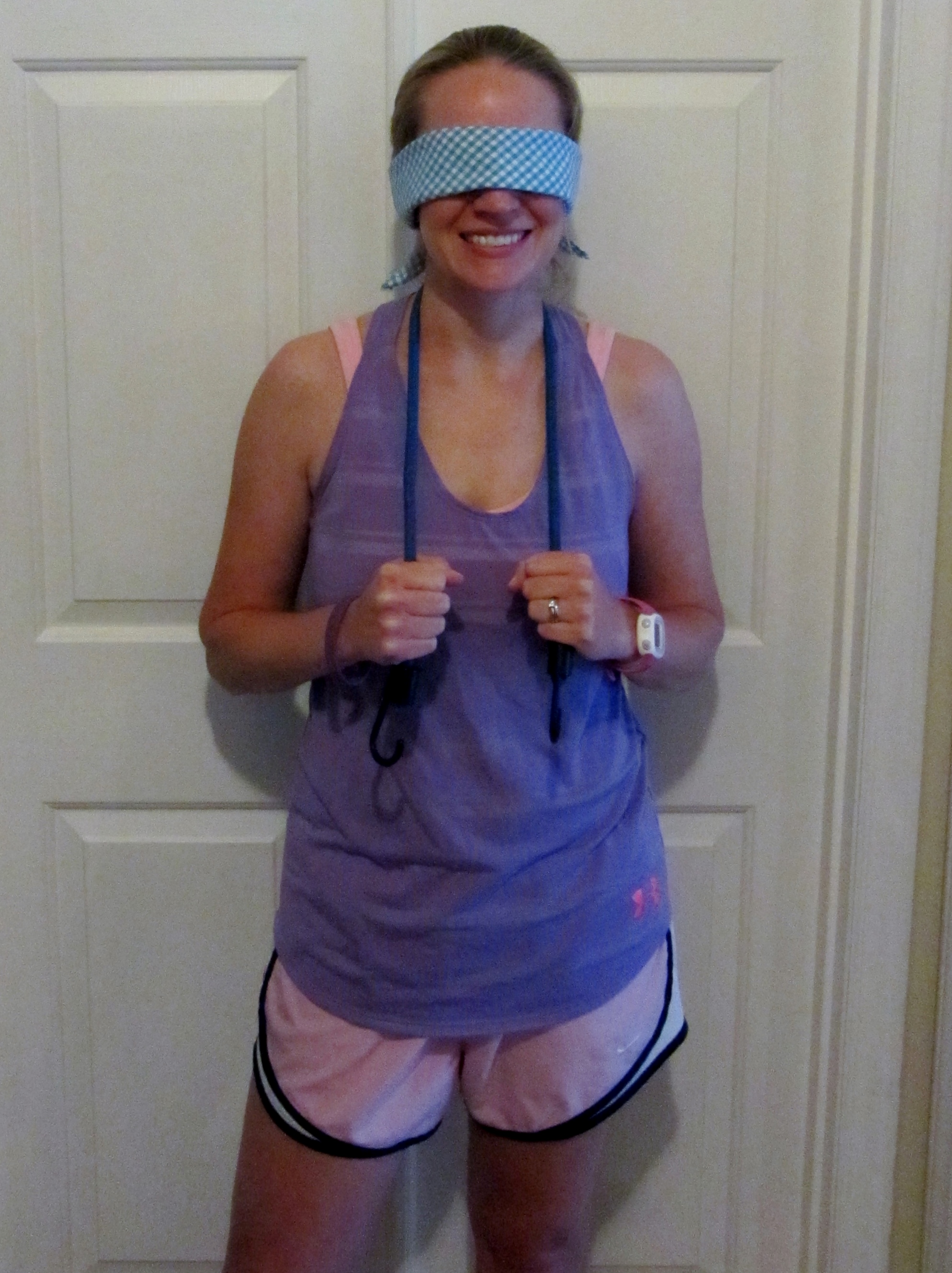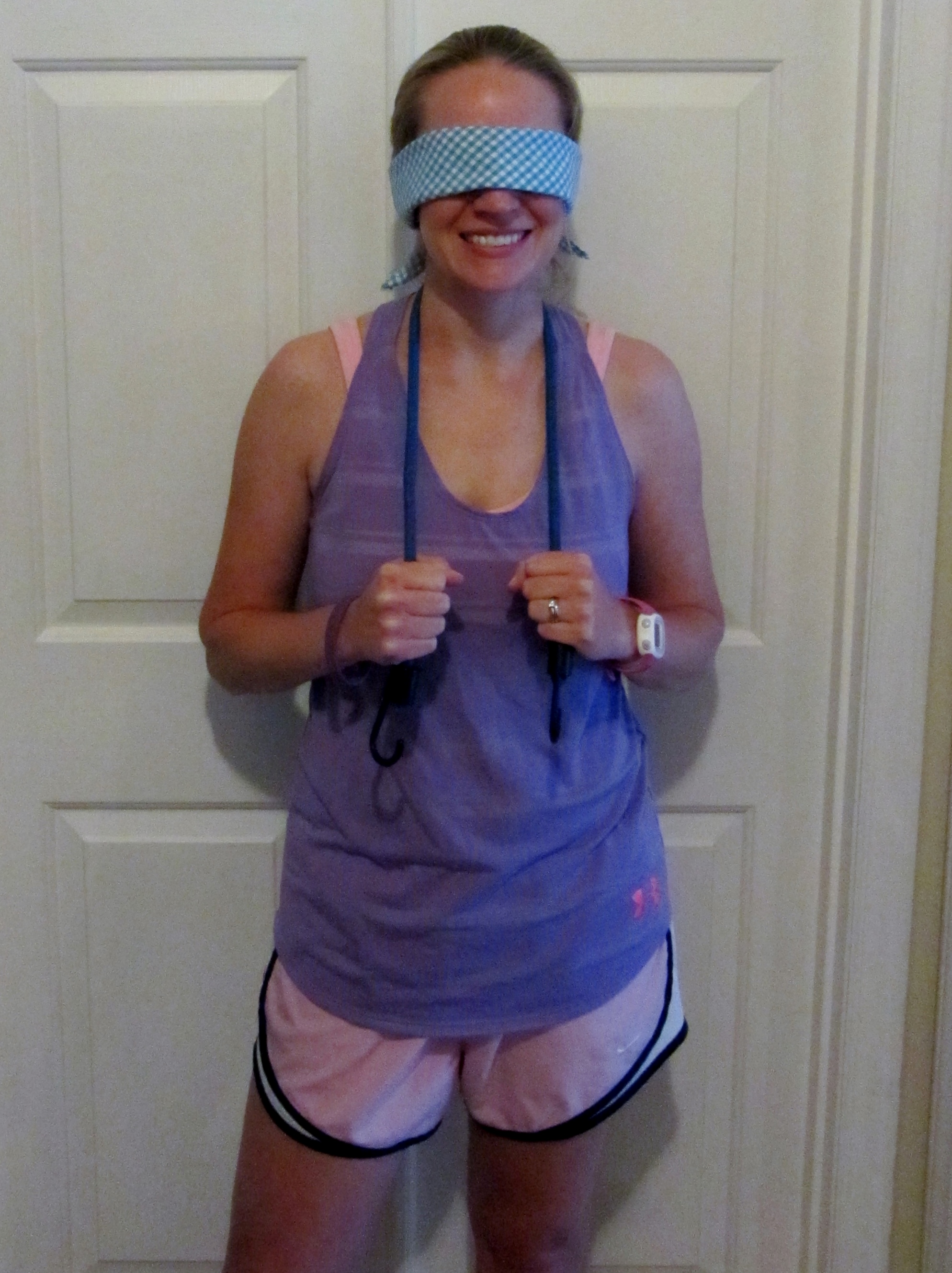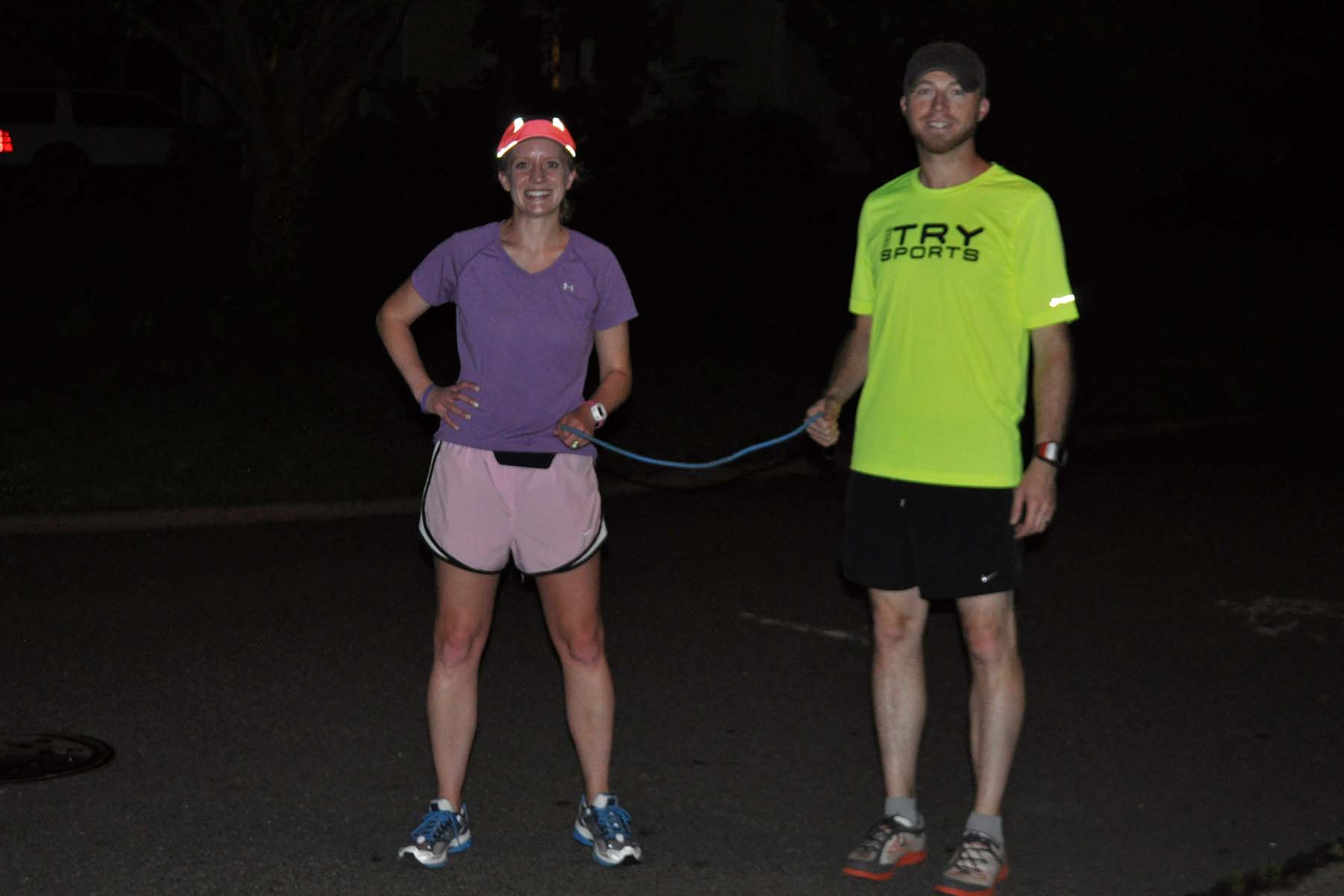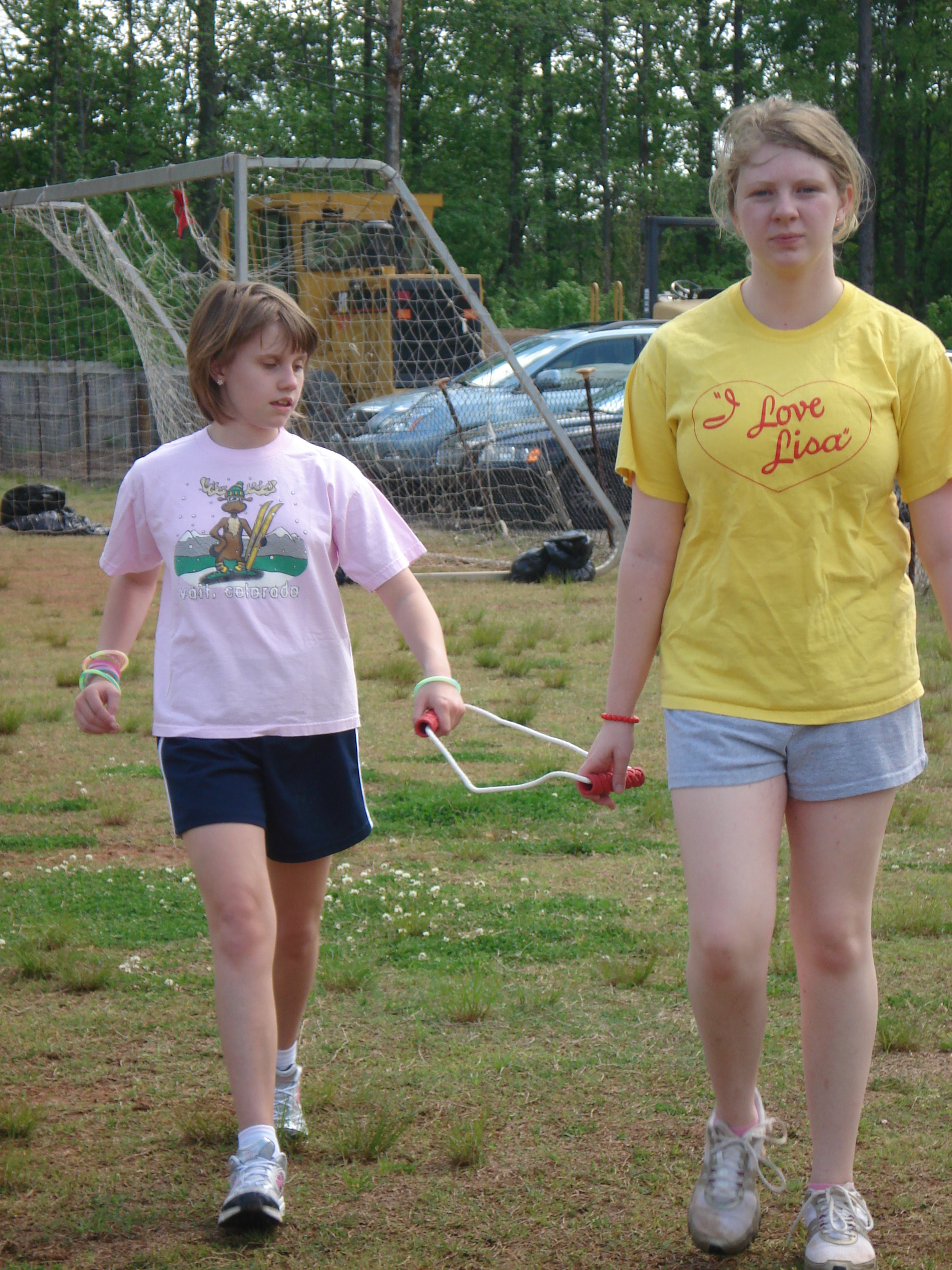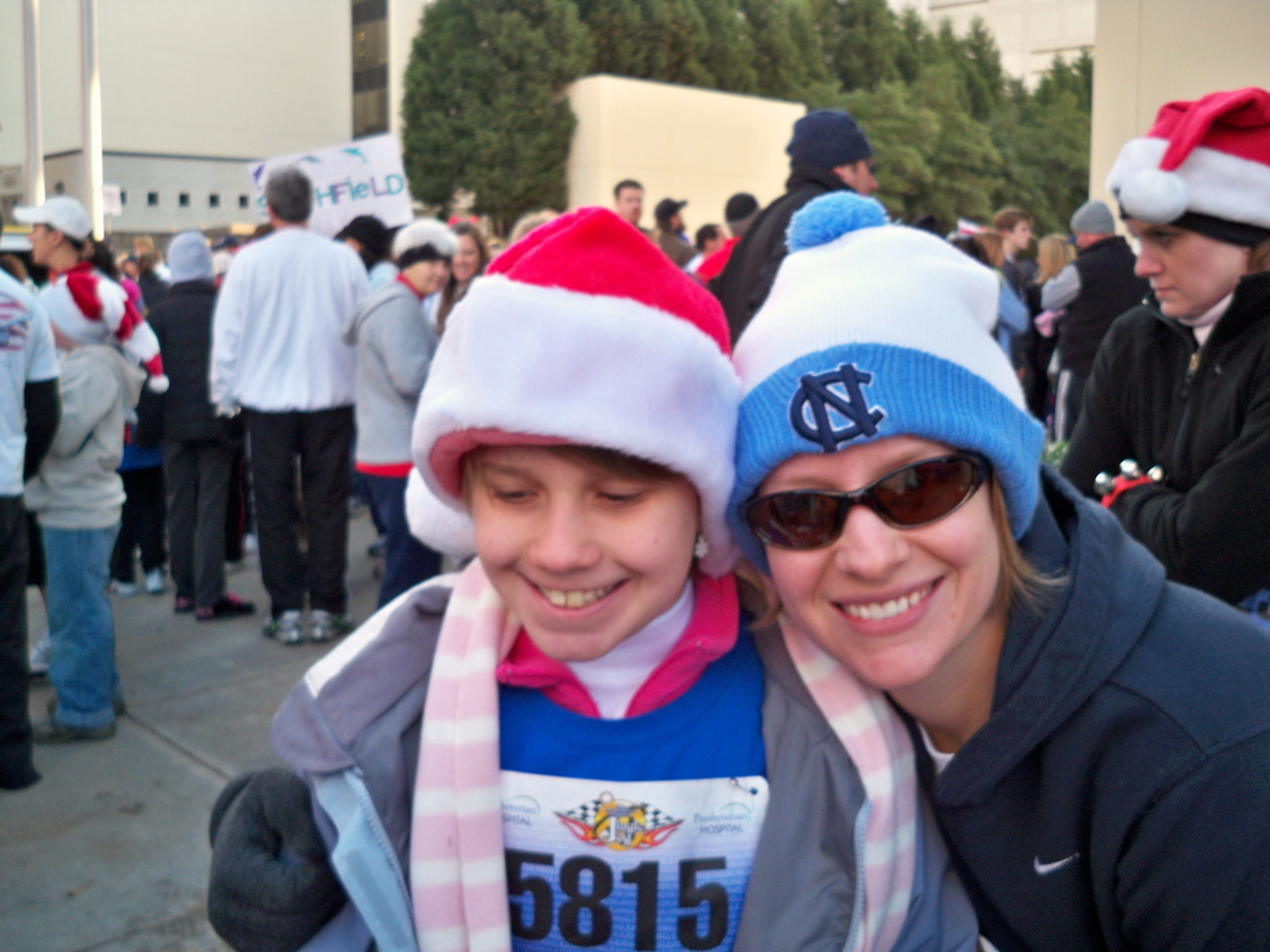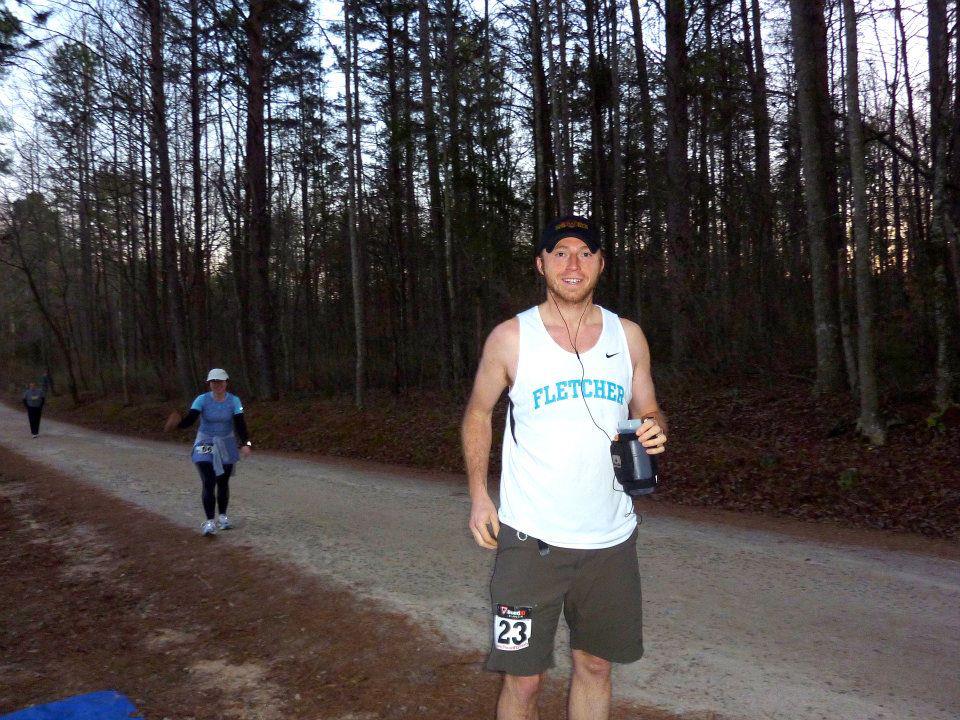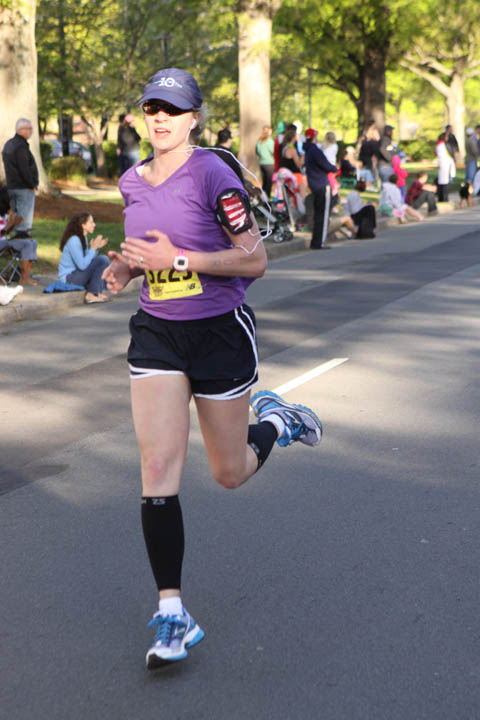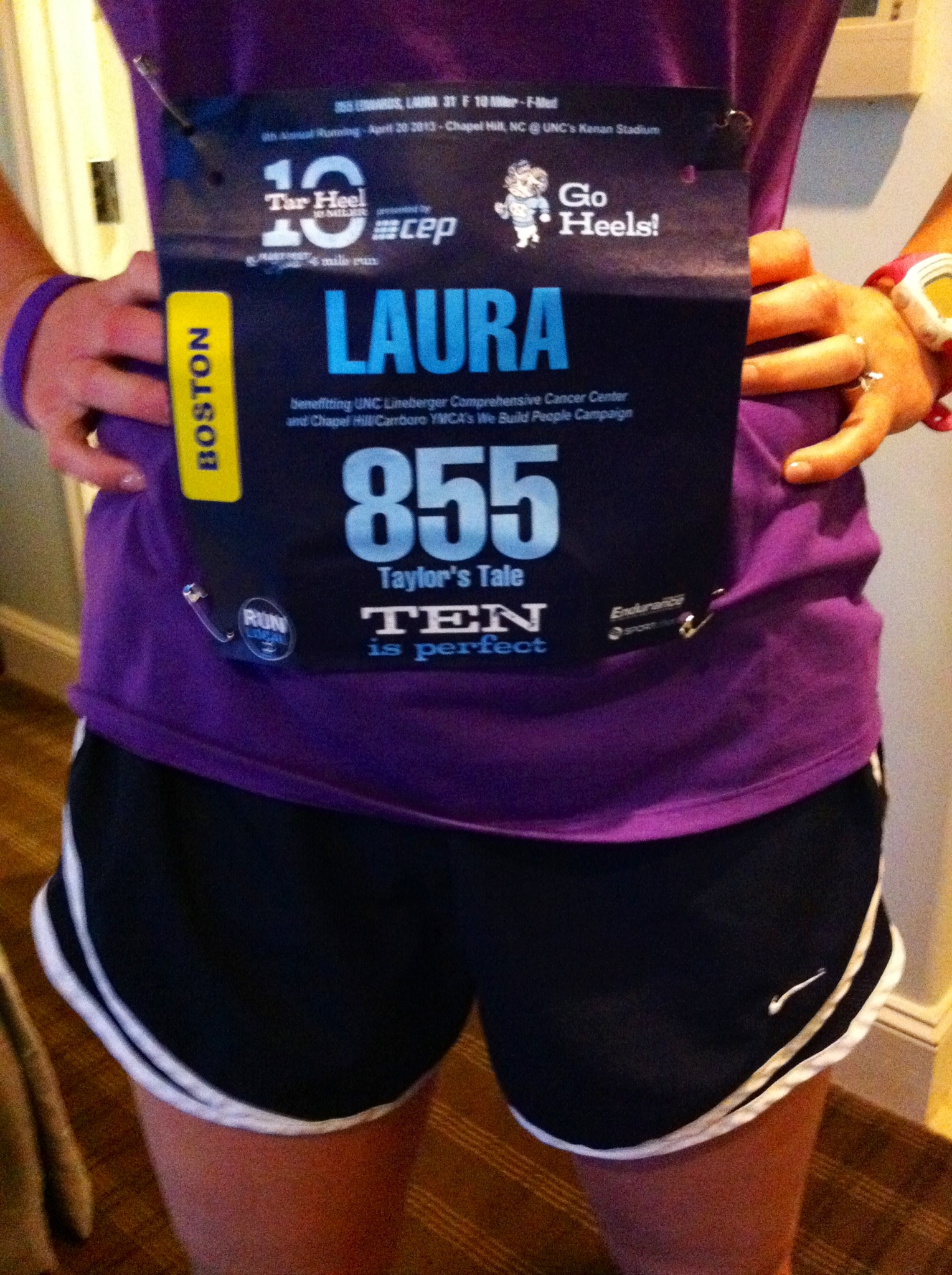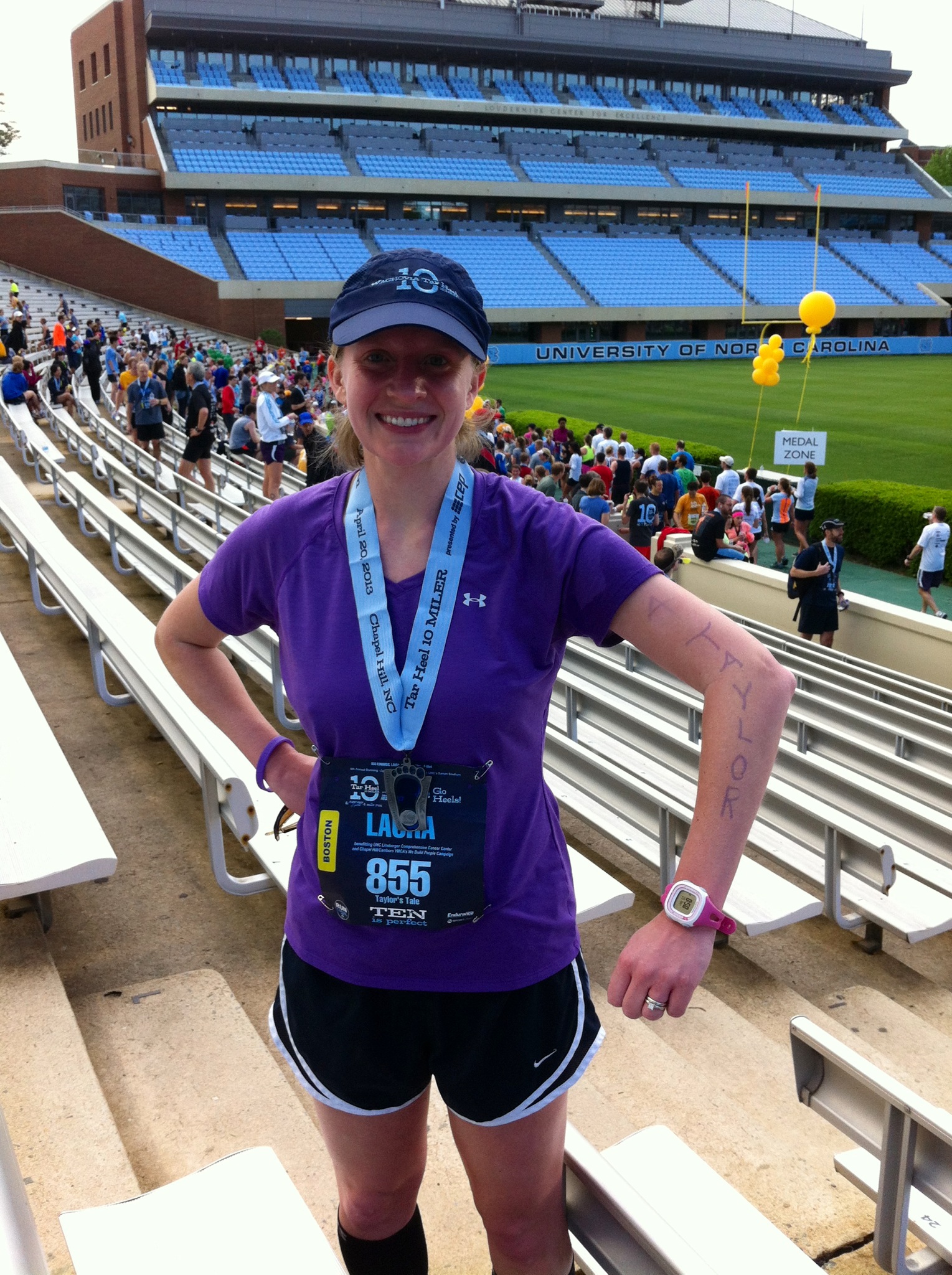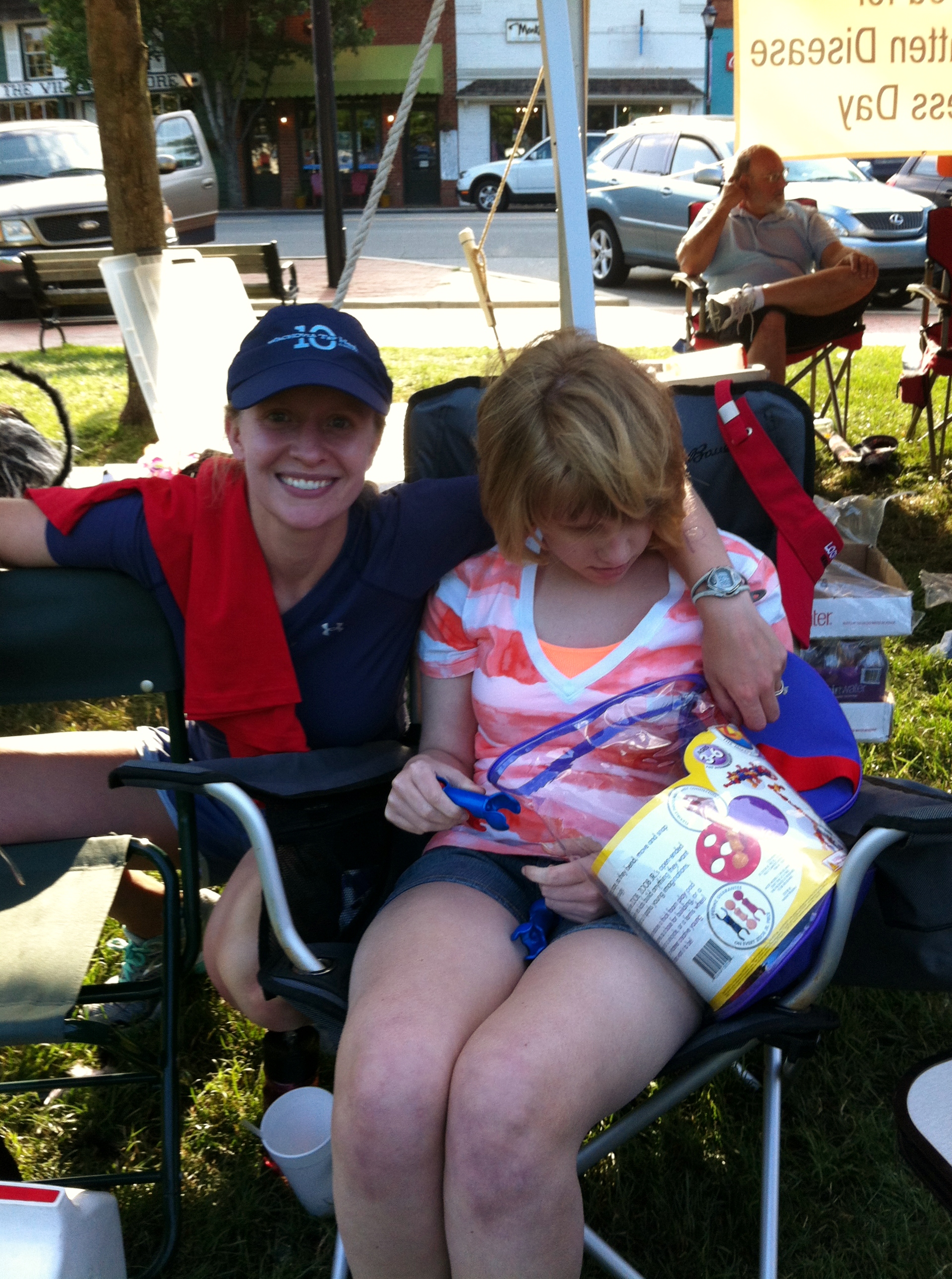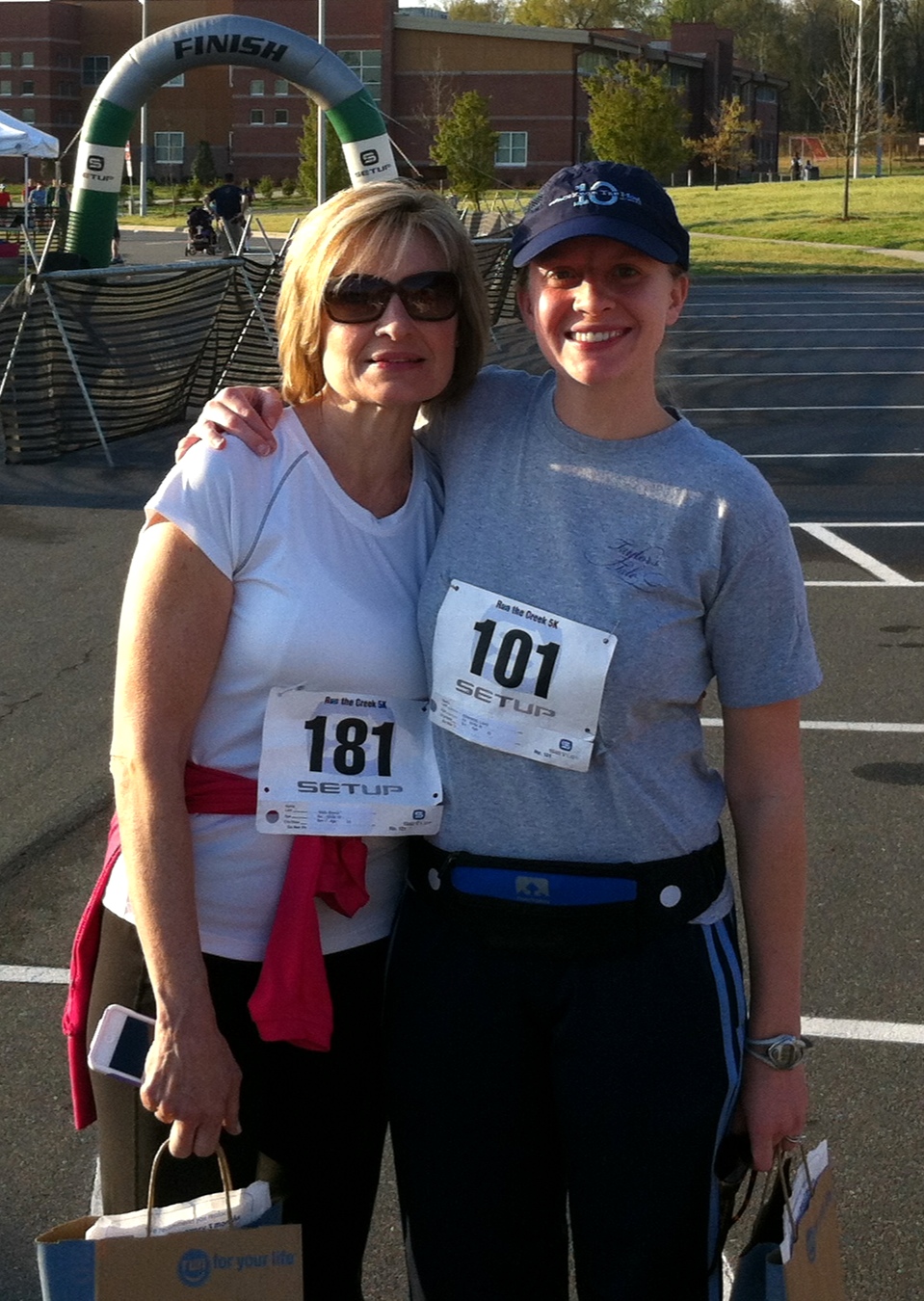 My mom, Sharon King, walks to stay in shape. She’s not a runner and says she’ll never be a runner.
My mom, Sharon King, walks to stay in shape. She’s not a runner and says she’ll never be a runner.
Last year, we walked the Run the Creek 5K together in support of the Batten Disease Support & Research Association. When the finish line came into view, without warning, Mom gave me a gentle push and goaded me into a two-woman race. Then, she broke into a sprint and cackled as she crossed the finish line a split second ahead of her runner daughter.
Mom hasn’t let me forget that she beat me that day. But she’s never run a 5K from start to finish – something my sister Taylor, who’s blind and suffers from Batten disease, did twice.
On Nov. 16, I’ll run Charlotte’s Thunder Road Half Marathon blindfolded to honor the five-year anniversary of Taylor’s first 5K. And about 30 minutes after my sighted guide, Andrew Swistak, and I each grasp an end of a three-foot bungee cord and I pull the blindfold over my eyes to begin my first-ever blindfolded half marathon, Mom will join a mass of people for the start of the event’s 5K.
Mom says she’s not ready to run that 5K today. But Andrew’s done a great job coaching me to run in a dark world, and now it’s my turn to coach. Over the next four months, I’ll alternate between meeting Andrew for blindfolded runs on the Charlotte streets and meeting Mom at the Y for 5K training. We’ll start by alternating between running two minutes, then walking two minutes. We’ll work up to a mile, then two, then three.
By race day, Mom will be a force on that 3.1-mile race course. She may not believe in her ability to run a 5K from start to finish, but I do. Because she told me today that she’ll run it for Taylor. And I’ve never known my mom to fail at anything she said she would do.
The Thunder Road Marathon, Thunder Road Half Marathon and 5K have plenty of room for other Taylor’s Tale supporters. If you’re interested in running to honor Taylor and support Taylor’s Tale, the 501(c)3 non-profit organization we founded to fight Batten disease and other rare diseases, please contact us.

